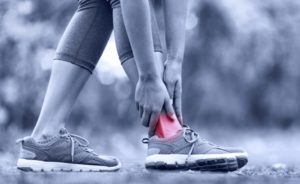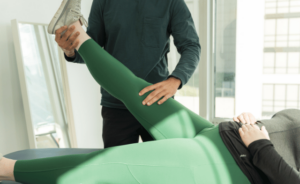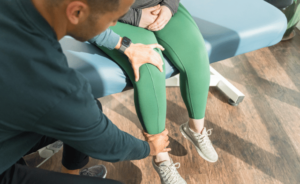Understanding IMS
Before diving into the signs that IMS could be beneficial for your back pain, let’s clarify what IMS stands for in physiotherapy. IMS, or Intramuscular Stimulation, is a therapeutic treatment that uses acupuncture needles to target deep muscle tissues that have become shortened due to chronic pain or neuropathic conditions.
Unlike traditional acupuncture, which focuses on restoring energy flow according to Chinese medicine, IMS is based on Western medical principles, specifically designed to relieve muscle tightness, nerve irritation, and pain. To learn more about our approach to IMS and dry needling, click here.
For IMS treatments, we recommend the following:
5 Signs IMS Will Work for Your Back Pain
- Chronic Pain Without a Specific Cause
Many patients experience ongoing back pain that doesn’t stem from clear, identifiable causes such as injuries or degenerative diseases. This type of pain can be particularly frustrating because traditional imaging tests, like MRIs or X-rays, often fail to reveal a specific source. IMS shines in these scenarios because it addresses the neuropathic nature of pain—pain that arises from the nervous system itself. When nerves malfunction, they can send constant pain signals to the brain, even in the absence of an actual injury. IMS targets these malfunctioning nerves and the muscles they innervate, helping to reset the nervous system’s perception of pain and providing relief even when other treatments have not been successful.
- Tightness and Muscle Knots
Muscle knots or trigger points are small, tight areas of muscle that can be extremely sensitive to touch and can cause pain in other parts of the body. These knots often develop from overuse, muscle strain, or sitting in the same position for too long. IMS treatment involves inserting needles into these tight bands of muscle, which can cause a reflexive “twitch” response. This twitch helps release the muscle tension and knot, improving blood flow to the area and alleviating pain. The effectiveness of IMS in these cases lies in its ability to reach deeper layers of muscle than manual therapies like massage can typically access.
- Limited Range of Motion
When your back pain limits your ability to move freely, it can severely impact your quality of life. This restriction often results from muscle stiffness and nerve irritation. By focusing on the affected muscles and the nerves that supply them, IMS therapy can reduce muscular stiffness, thereby improving your range of motion. The technique helps to “reset” muscle length to its normal state, allowing for greater flexibility and movement without pain. This is particularly beneficial for those whose activities are limited by pain and stiffness, offering a pathway back to normal activity levels.
- Pain That Improves with Exercise
If your back pain tends to lessen with movement or exercise but worsens after periods of inactivity, it could be a sign that your pain is linked to muscle and nerve dysfunction rather than structural issues. Exercise increases blood flow and can temporarily relieve nerve compression, suggesting that treatments targeting these areas might be effective. IMS directly addresses this by stimulating the muscles and nerves, promoting healing and reducing pain. This sign indicates that your body responds positively to interventions that target the neuromuscular system, making IMS an appropriate choice.
- Previous Success with Acupuncture
Individuals who have experienced relief from traditional acupuncture might find IMS to be a suitable next step for addressing back pain. While both techniques use similar tools (thin needles), IMS’s approach is more targeted toward neuropathic pain and muscle dysfunction. If acupuncture has provided partial relief, IMS could potentially offer a more focused and lasting solution by addressing the root cause of the pain more directly. The success of acupuncture suggests responsiveness to needle-based therapies, making IMS a logical and potentially more effective alternative for chronic back pain sufferers.
FAQs
What is the Difference Between Dry Needling and IMS?
While both dry needling and IMS involve the insertion of needles into the muscle to relieve pain, the primary difference lies in their approach and theory. Dry needling is primarily focused on treating myofascial trigger points, whereas IMS is designed to treat neuropathic muscle pain, addressing the nerve root of the pain. Both techniques require significant training and understanding of the body’s musculoskeletal and nervous systems, but IMS is often considered more comprehensive due to its focus on diagnosing and treating the underlying cause of the pain.
Is IMS Treatment Painful?
The sensation experienced during IMS treatment varies from person to person. While some may feel a slight prick as the needle penetrates the skin, the most notable sensation is often a muscle cramp or twitch, which is a good sign that the treatment is targeting the right area. This discomfort is usually brief and is followed by a feeling of relief and relaxation in the muscles.
Is IMS the Same as Acupuncture?
Although IMS uses acupuncture needles and shares some superficial similarities with acupuncture, the two are distinct practices. Acupuncture is based on traditional Chinese medicine and seeks to balance the body’s energy flow. In contrast, IMS is grounded in Western medical science, focusing specifically on treating neuropathic muscle pain by stimulating muscles at points of nerve irritation.
Conclusion
If you’re struggling with chronic back pain and conventional treatments have fallen short, IMS might offer the relief you’ve been searching for. Its ability to address underlying neuromuscular issues makes it a compelling option for those who have not found success with other methods. At Vancouver Physiotherapy Hub, our team of skilled professionals is dedicated to providing you with a personalized treatment plan that addresses your specific needs. With the right approach, IMS can be a transformative step towards reclaiming your life from back pain.
Remember, every individual’s condition is unique, so it’s important to consult with a healthcare professional to determine the most appropriate treatment for your situation. If you’re considering IMS for your back pain, we invite you to reach out to us. Let’s work together to get you back to feeling your best.






